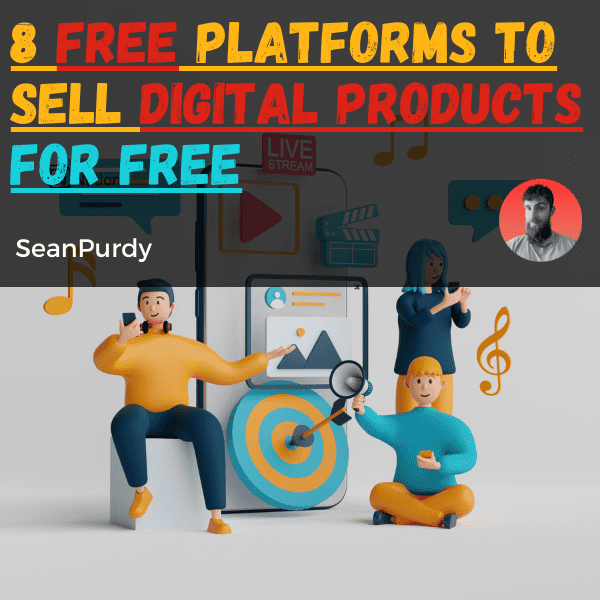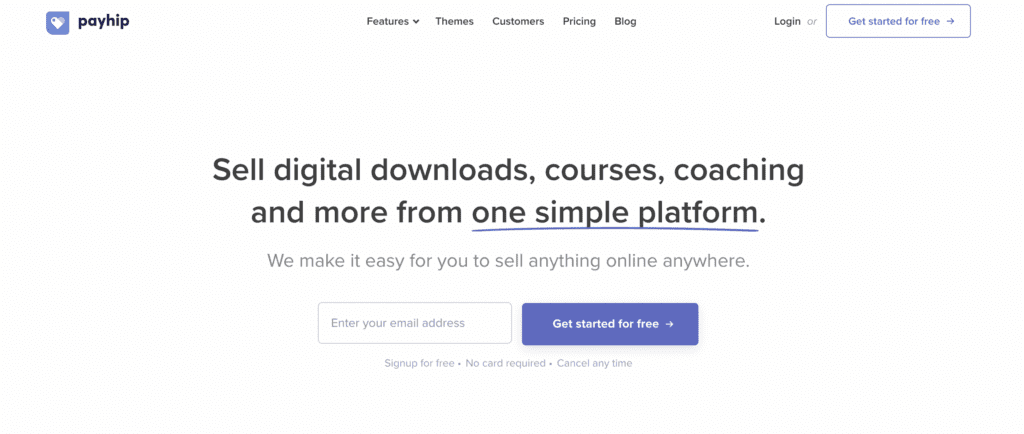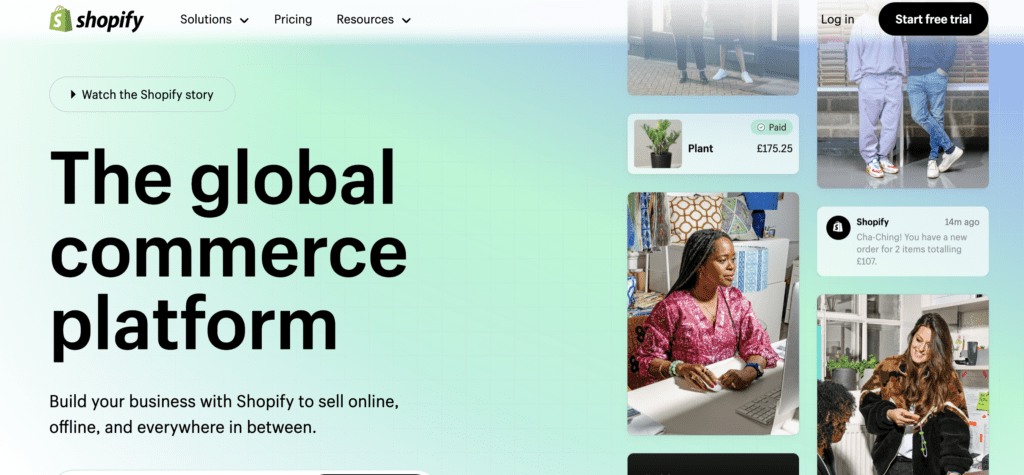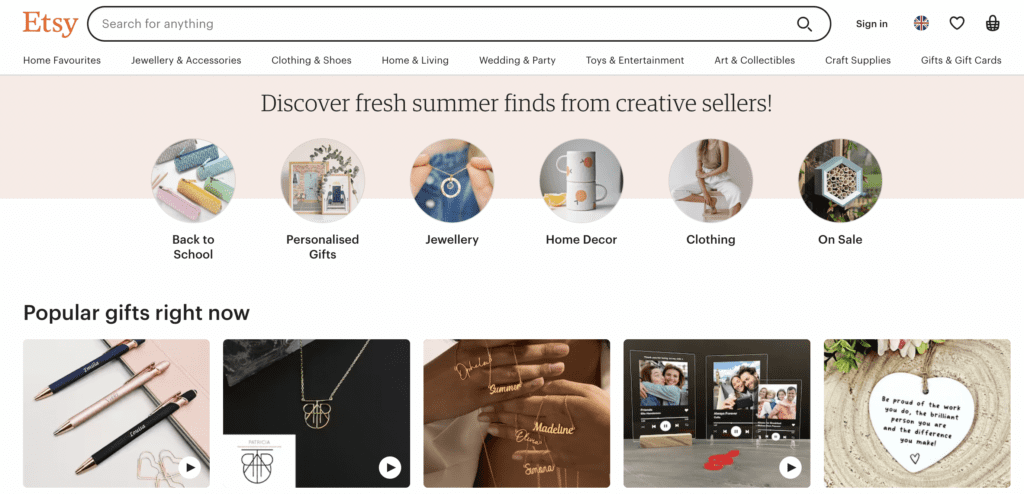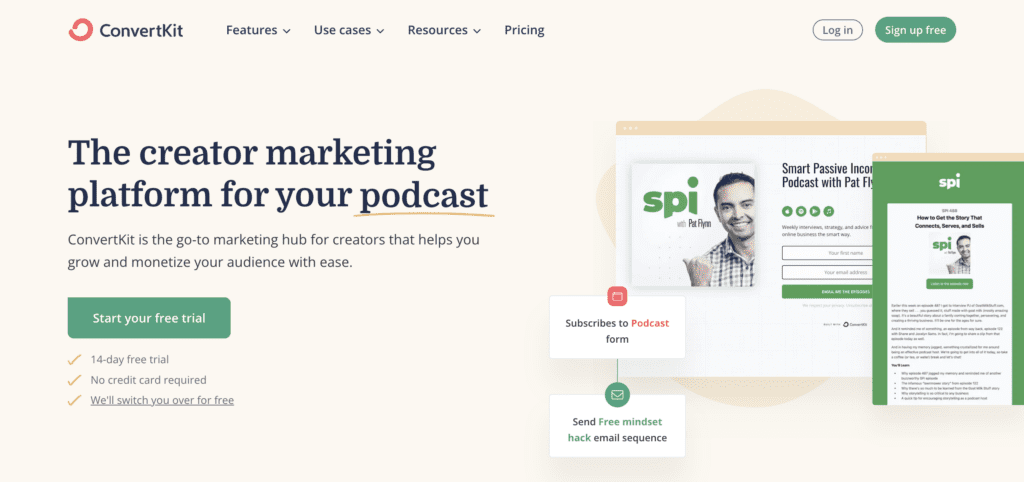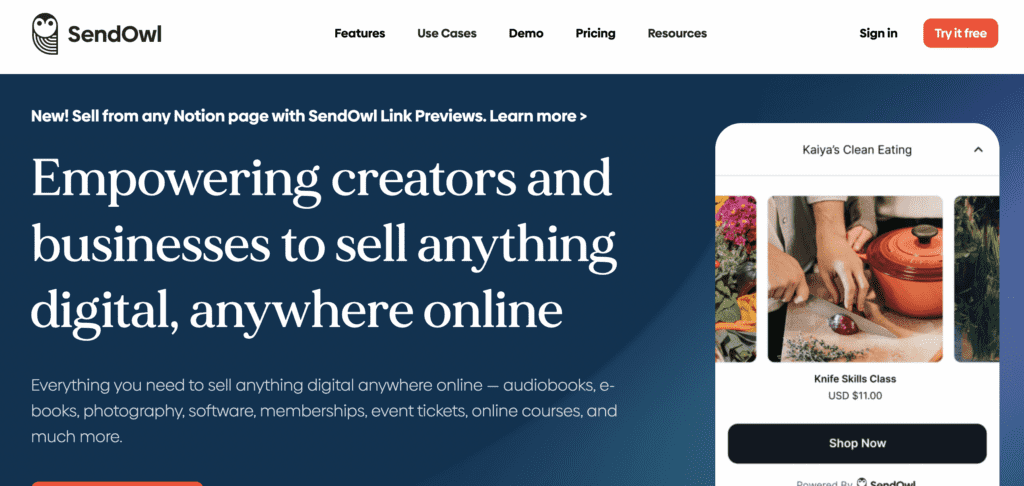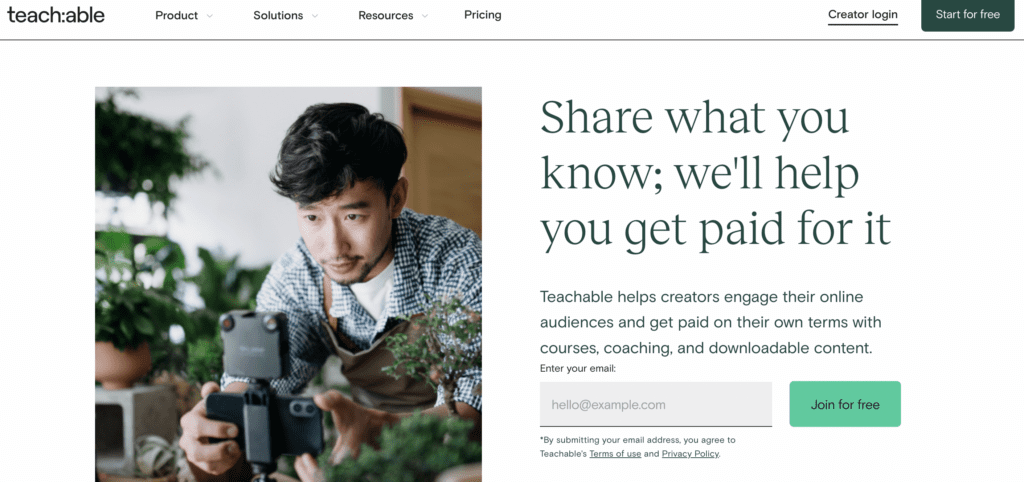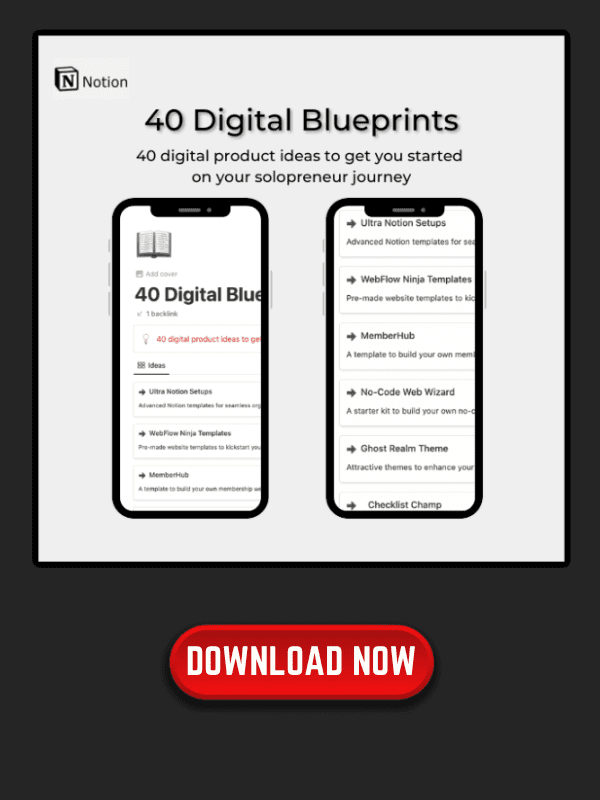If you’re looking where to sell digital products for free, you’re in luck.
There are several platforms available that allow you to sell your digital products without any upfront costs. From ebooks and music to online courses and software, you can sell a variety of digital products on these platforms.
Understanding digital products is essential before deciding where to sell them. Digital products are intangible items that can be downloaded or accessed online, such as music, ebooks, software, and online courses.
They are popular among creators and entrepreneurs because they can be easily produced and distributed, making them a low-cost and high-profit option.
In this article, we’ll explore the top platforms where you can sell digital products for free. We’ll cover the pros and cons of each platform, the types of digital products you can sell, and how to market your products effectively. Whether you’re an artist, writer, musician, or entrepreneur, these platforms offer a great opportunity to sell your digital products and reach a wider audience.
- Digital products are intangible items that can be downloaded or accessed online, such as music, ebooks, software, and online courses.
- There are several free platforms available to sell digital products online, including Payhip, Gumroad, and Shopify.
- To effectively market your digital products, it’s important to understand your target audience and use social media and email marketing.
Table of Contents
Understanding Digital Products
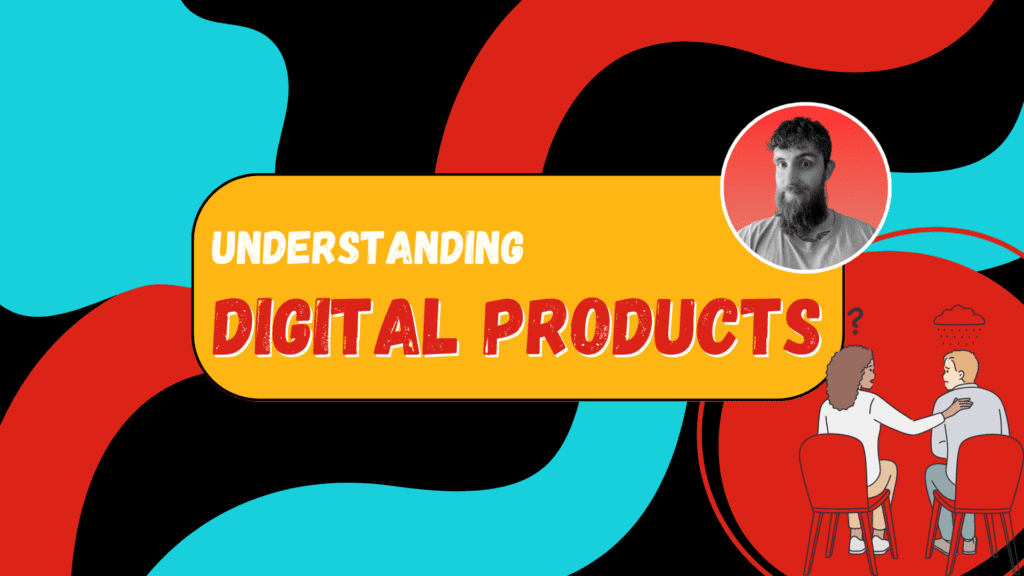
If you’re looking to sell digital products for free online, it’s essential to understand what digital products are and the different types of digital products you can sell.
Digital products are any products that can be delivered electronically, such as ebooks, music, videos, online courses, digital downloads, and other digital goods. Unlike physical products, digital products can be delivered instantly and have no shipping or handling costs, making them an excellent option for content creators and entrepreneurs looking to sell online.
Ebooks are one of the most popular digital products, and they can cover a wide range of topics, from fiction and non-fiction to self-help and how-to guides. Music and videos are also popular digital products, and they can be sold as individual tracks or episodes or as complete albums or seasons.
Online courses are another popular form of digital products, and they can be sold as standalone courses or as part of a membership site. Online courses can cover a wide range of topics, from business and marketing to health and fitness, and they can be delivered in various formats, including video, audio, and text.
Digital downloads are another popular form of digital products, and they can include anything from software and apps to graphics and templates. Digital downloads can be sold individually or as part of a bundle, and they can be an excellent option for content creators looking to sell digital products online.
Why Sell Digital Products online
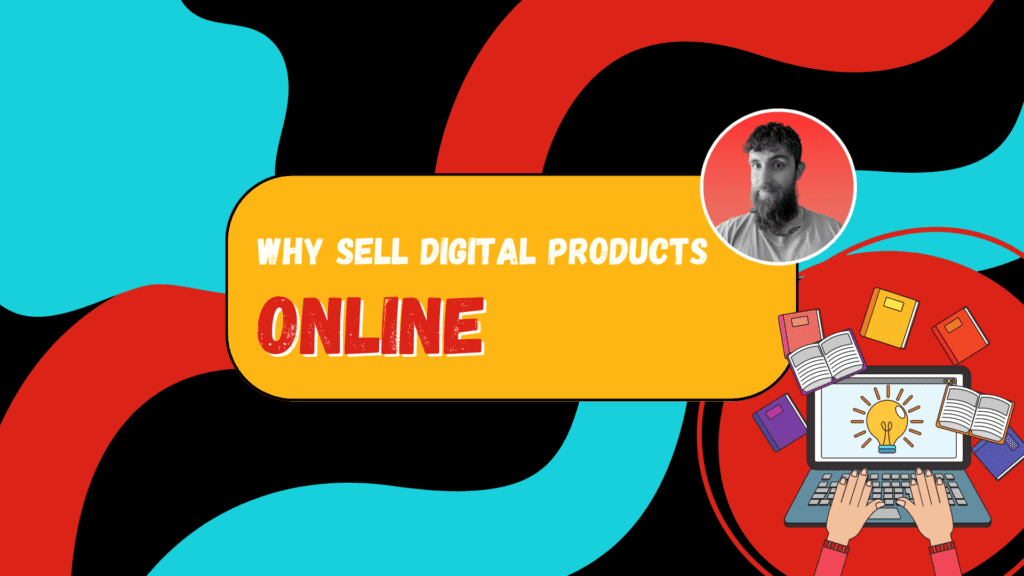
Selling digital products has become a popular way to start an online business and earn extra income. With the rise of the internet and digital technology, it has become easier than ever to create and sell digital products like e-books, online courses, software, and more. Here are some reasons why you should consider selling digital products:
Low Overhead Costs
One of the biggest advantages of selling digital products is that it comes with low overhead costs. Unlike physical products, digital products don’t require inventory, shipping, or storage space. This means that you can save money on renting storage space, buying packaging, and shipping products. As a result, you can keep your pricing competitive and increase your profit margins.
Flexibility in Pricing
Another advantage of selling digital products is that it gives you flexibility in pricing. Unlike physical products, you can adjust the price of your digital products easily. This means that you can test different pricing strategies to find out what works best for your target audience. You can also offer discounts, promotions, and bundles to incentivize sales.
Access to a Global Market
Selling digital products also gives you access to a global market. Since digital products can be downloaded from anywhere in the world, you can sell your products to customers worldwide. This means that you can reach a larger audience and increase your sales potential.
Free Platforms to Sell Digital Products for free
If you’re just starting out and don’t want to invest in a paid platform, there are several platforms to sell digital products for free. These platforms allow you to create and sell digital products without any upfront costs. Some of the popular free platforms to sell digital products include Payhip, Teachable, Thinkific, ConvertKit, Shopify, Etsy, Gumroad, and Udemy. Each platform has its own set of features and benefits, so it’s important to research and choose the right one for your business.
ℹ️ Remember
In conclusion, selling digital products can be a profitable and low-risk way to start an online business. With the right platform and strategy, you can create and sell digital products that appeal to your target audience and generate revenue.
Types of Digital Products You Can Sell
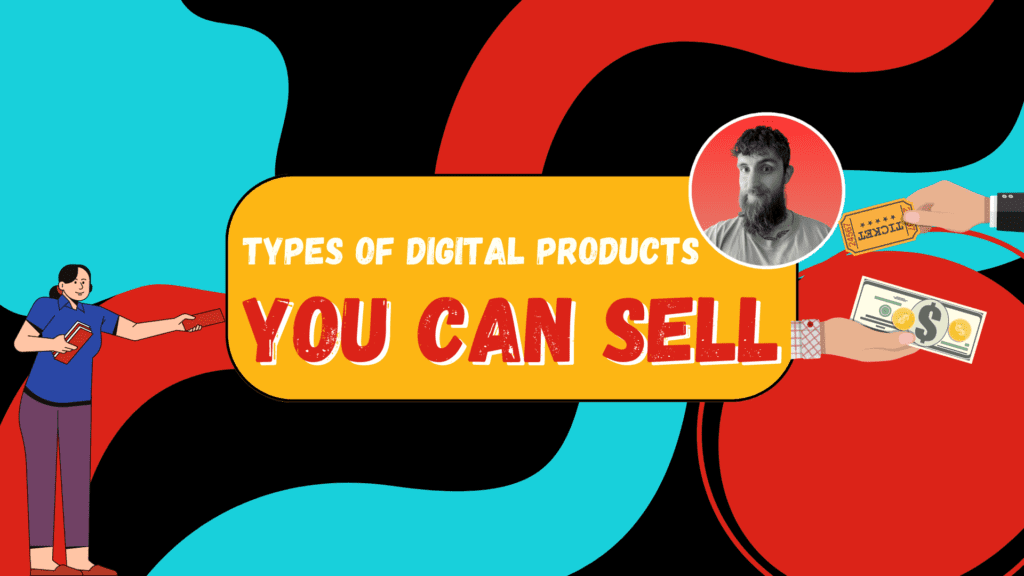
When it comes to selling digital products, there are a variety of options available. Here are some of the most popular types of digital products you can sell:
Ebooks and Online Courses
Ebooks and online courses are great options for those who want to share their knowledge and expertise with others. Whether you’re an expert in a specific field or you have a unique perspective on a particular topic, you can create an ebook or online course to share your ideas and insights with others and solve thier pain points.
Art and Design
If you’re an artist or designer, you can sell your digital creations online. From illustrations and graphics to fonts and themes, there are plenty of opportunities to showcase your work and make a profit.
Music and Videos
Musicians and filmmakers can also sell their digital products online. Whether you create original music or produce videos for YouTube, you can monetize your content and reach a wider audience through digital sales.
Software and Themes
Software developers and web designers can sell their digital products online as well. From mobile apps to WordPress themes, there are plenty of opportunities to create and sell digital products that meet the needs of businesses and consumers alike.
Photos and Graphics
Finally, photographers and graphic designers can sell their digital products online as well. From stock photos to custom graphics, there are plenty of opportunities to showcase your work and make a profit.
ℹ️ Remember
In conclusion, there are many different types of digital products you can sell online. Whether you’re an artist, writer, musician, or software developer, there are plenty of opportunities to share your work and make a profit in the digital marketplace.
Where to Sell Digital Products for Free
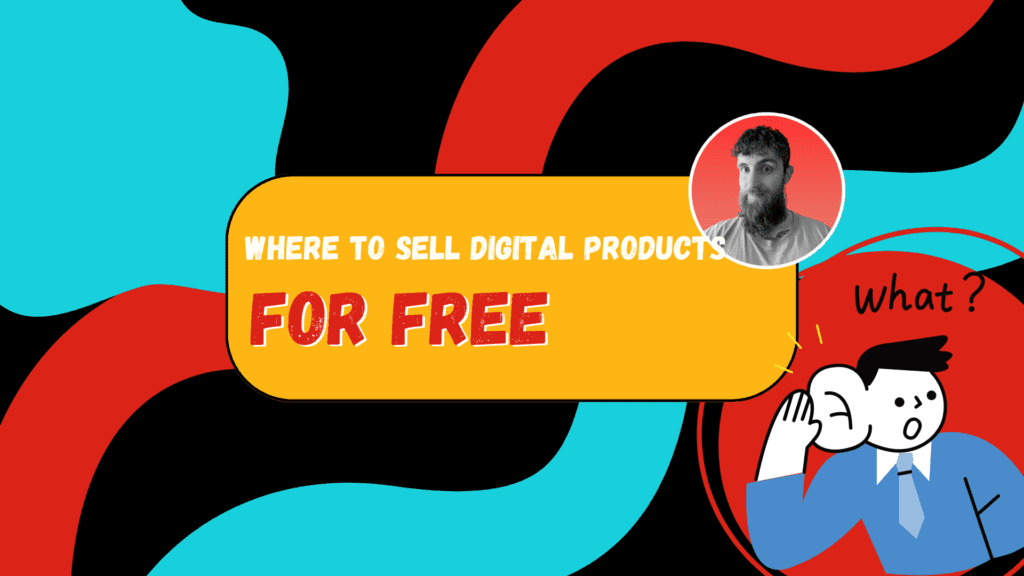
If you’re looking for a free platform to sell your digital products, you’re in luck. There are plenty of options available that can help you get started without breaking the bank. Here are some of the best free platforms to sell your digital products:
Payhip is a user-friendly platform that makes it easy to sell and promote your digital products. You can sell ebooks, courses, design assets, and more. Payhip offers a free plan that allows you to list up to five products and gives you access to basic features like customizable checkout pages and sales analytics.
2. Gumroad
Gumroad is a platform dedicated to selling digital products. It’s great for artists, writers, musicians, and other creatives who want to sell ebooks, music, software, or other digital products. With Gumroad, you don’t have to worry about setting up a website or dealing with payment processing. They offer a free plan that allows you to list up to 10 products and gives you access to basic features like customizable checkout pages and sales analytics.
3. Shopify
Shopify is a popular ecommerce platform that can be used to sell both physical and digital products. While Shopify isn’t free, they do offer a 14-day free trial that allows you to test out their platform and see if it’s right for you. Shopify offers a range of features that can help you sell your digital products, including customizable checkout pages, sales analytics, and the ability to create discount codes.
4. Etsy
Etsy is a popular platform for selling handmade and vintage items, but it can also be used to sell digital products like printables, graphics, and digital art. Etsy charges a small fee for each listing and takes a percentage of each sale, but it’s still a great option for those who want to sell digital products online without setting up their own website.
5. WooCommerce
WooCommerce is a free ecommerce plugin for WordPress that can be used to sell both physical and digital products. WooCommerce offers a range of features that can help you sell your digital products, including customizable checkout pages, sales analytics, and the ability to create discount codes.
6. SendOwl
SendOwl is a platform that specializes in selling digital products like ebooks, music, and software. They offer a free plan that allows you to list up to 10 products and gives you access to basic features like customizable checkout pages and sales analytics. SendOwl also offers a range of advanced features like upsells and affiliate marketing.
7. Teachable
Teachable is a platform that allows you to create and sell online courses. While Teachable isn’t free, they do offer a free plan that allows you to create and sell courses with limited features. Teachable offers a range of features that can help you create and sell your online courses, including customizable checkout pages, sales analytics, and the ability to create quizzes and surveys.
8. Udemy
Udemy is a popular platform for selling online courses. While Udemy isn’t free, they do offer a free plan that allows you to create and sell courses with limited features. Udemy offers a range of features that can help you create and sell your online courses, including customizable checkout pages, sales analytics, and the ability to create quizzes and surveys.
Udemy

If you’re looking to sell your digital products, Udemy is a great platform to consider. Here’s what you need to know about getting paid and fees on Udemy.
How do I get paid on Udemy?
Udemy offers several payment options, including PayPal and Payoneer. You can choose your preferred payment method in your account settings. Udemy pays instructors on a monthly basis, within 30 days of the end of the month in which the revenue was generated. If you’re using PayPal, there is a minimum payout threshold of $10. If you’re using Payoneer, there is a minimum payout threshold of $20.
What Are the fees on Udemy?
Udemy takes a percentage of the revenue generated from your course sales. The exact percentage depends on how the student found your course. If the student found your course through Udemy’s marketing efforts, Udemy takes 50% of the revenue. If the student found your course through your own marketing efforts, Udemy takes 3% of the revenue. If the student found your course through an affiliate, Udemy takes 25% of the revenue.
It’s important to note that Udemy also charges a processing fee for each transaction. The processing fee varies depending on the payment method used by the student. For credit card transactions, the fee is 3% plus $0.30 per transaction. For PayPal transactions, the fee is 2% plus $0.30 per transaction.
Overall, Udemy offers a straightforward way to sell your digital products. With a large user base and a variety of payment options, it’s definitely worth considering for your business.
Payhip is a user-focused platform that makes it easy to sell digital downloads and courses. It provides an easy-to-use interface and a variety of features that can help you increase your sales and grow your business. Here’s what you need to know about Payhip.
Payhip supports a variety of payment methods, including PayPal, Stripe, and Apple Pay. You can choose which payment methods you want to accept and set up your payment settings in your Payhip dashboard. Once you’ve set up your payment settings, Payhip will automatically process payments and transfer the money to your account.
Payhip charges a small fee for each sale you make on the platform. The fee is based on the price of your product and ranges from 5% to 25%. Payhip also charges a small transaction fee for each payment you receive, which is typically around 2.9% + 30 cents per transaction.
Overall, Payhip is an excellent platform for selling digital products and courses. It provides an easy-to-use interface, a variety of payment options, and affordable fees. If you’re looking for a platform to sell your digital products, Payhip is definitely worth considering.
Gumroad

If you’re a digital creator, you might have heard of Gumroad. It is a popular platform that allows you to sell digital products online. Gumroad is user-friendly and easy to set up, making it a popular choice for many creators.
How do I get paid on Gumroad?
Gumroad supports multiple payment options, including credit/debit cards, PayPal, and Apple Pay. When a customer purchases your product, the payment is processed through Gumroad’s payment system. Gumroad then transfers the funds to your account.
To get paid on Gumroad, you need to connect your payment information to your Gumroad account. You can do this by going to your Gumroad dashboard and selecting “Payment & Payouts.” From there, you can add your bank account, PayPal, or other payment information.
Once your payment information is set up, you can start selling your digital products on Gumroad. When a customer purchases your product, Gumroad will automatically process the payment and transfer the funds to your account.
What Are the fees on Gumroad?
Gumroad charges a fee for each transaction. The fee varies depending on the price of your product and the payment method used by the customer. For example, if you sell a product for $10 and the customer pays with a credit card, Gumroad will charge a fee of $0.30 + 3.5% of the transaction amount. If the customer pays with PayPal, Gumroad will charge a fee of $0.30 + 3.5% + 0.30 of the transaction amount.
Gumroad also offers a premium subscription service that provides additional features for creators. The premium service costs $10 per month, and it includes features like custom domains, advanced analytics, and email marketing tools.
Overall, Gumroad is a great platform for digital creators who want to sell their products online. It is easy to use, and it supports multiple payment options. However, it is important to be aware of the fees associated with using the platform.
Shopify is a popular platform for selling digital products, as well as physical products. It offers a range of features and tools to help you manage your online store and sell your products effectively.
How do I get paid on Shopify?
To get paid on Shopify, you need to set up a payment gateway. Shopify offers a range of payment gateways, including Shopify Payments, PayPal, Stripe, and more. You can choose the payment gateway that works best for you, depending on your location and the currencies you want to accept.
When a customer makes a purchase on your Shopify store, the payment will be processed through your chosen payment gateway. The funds will then be deposited into your bank account, usually within a few business days.
What Are the fees on Shopify?
Shopify charges a monthly fee to use its platform, starting from $29 per month. This fee includes access to all of Shopify’s features and tools, as well as hosting for your online store.
In addition to the monthly fee, Shopify also charges transaction fees on each sale you make. The transaction fees vary depending on the payment gateway you use and the plan you are on. With Shopify Payments, for example, the transaction fee is 2.9% + 30¢ per transaction on the Basic Shopify plan, and 2.4% + 30¢ per transaction on the Shopify and Advanced Shopify plans.
Overall, Shopify is a great platform for selling digital products, with a range of features and tools to help you manage your online store and sell your products effectively. With its user-friendly interface and powerful integrations, it’s a great choice for anyone looking to start an online business.
If you’re looking for a platform to sell your digital products, Etsy is a great option to consider. It’s a well-established marketplace that has been around since 2005, and it has a large customer base that’s interested in unique and handmade items.
How do I get paid on Etsy?
Etsy offers several payment options for sellers. You can choose to be paid through Etsy Payments, which allows buyers to pay with a credit card, debit card, or Etsy Gift Card. You can also choose to accept payments through PayPal or by check or money order.
When a buyer makes a purchase, the funds are deposited into your Etsy account. You can then transfer the funds to your bank account or use them to make purchases on Etsy.
What are the fees on Etsy?
Etsy charges a listing fee of $0.20 per item, which is paid when you create a listing. This fee is non-refundable, even if the item doesn’t sell.
When an item sells, Etsy takes a transaction fee of 5% of the total sale price, including shipping costs. If you use Etsy Payments, there is an additional payment processing fee of 3% + $0.25 per transaction.
Overall, Etsy’s fees are relatively low compared to other platforms, making it a great option for sellers looking to keep their costs down.
In conclusion, Etsy is a great platform for selling digital products, especially if you’re looking for a marketplace with a large customer base. With its low fees and multiple payment options, it’s definitely worth considering as a platform for your business.
If you’re a creator looking to sell digital products, ConvertKit is a great platform to consider. Here’s what you need to know about getting paid and the fees associated with using ConvertKit.
How do I get paid on ConvertKit?
When you sell a digital product on ConvertKit, the payment is processed through Stripe. This means that you’ll need to connect your Stripe account to ConvertKit in order to receive payments.
Once you’ve connected your Stripe account, you can start creating products to sell on ConvertKit. You can sell a variety of digital products, including ebooks, courses, and design assets. You can also create bundles of products to sell at a discounted price.
When someone purchases one of your products on ConvertKit, the payment will be processed through Stripe and deposited into your Stripe account. From there, you can transfer the funds to your bank account.
What are the fees on ConvertKit?
ConvertKit charges a 3.5% transaction fee on all sales made through the platform. This fee is in addition to the fees charged by Stripe, which is typically around 2.9% + $0.30 per transaction.
While the fees on ConvertKit may seem high compared to some other platforms, it’s important to consider the value that ConvertKit provides. With ConvertKit, you have access to powerful marketing tools and integrations that can help you grow your audience and sell more products.
Overall, if you’re a creator looking for a platform to sell digital products, ConvertKit is definitely worth considering. With its user-friendly interface and powerful marketing tools, it’s a great option for anyone looking to monetize their digital content.
SendOwl is a popular platform that allows creators and businesses to sell digital products, subscriptions, memberships, and more. It is a user-friendly platform that makes it easy to sell and promote your ebooks, courses, design assets, and more. Here are some key features of SendOwl:
- Automatic delivery of digital goods after checkout
- Customizable checkout pages
- Built-in affiliate system
- Integration with payment gateways like PayPal and Stripe
- Multi-language support
How do I get paid on SendOwl?
SendOwl offers a variety of payment options for sellers. You can choose to receive payments via PayPal, Stripe, or Authorize.net. You can also set up your own custom payment gateway if you prefer. Once a buyer completes checkout, SendOwl automatically delivers a secure link to retrieve their digital goods. You can track your sales and earnings in real-time from your SendOwl dashboard.
What Are the fees on SendOwl?
SendOwl charges a flat fee of $9/month for their basic plan, which includes up to 10 products. For larger businesses, they offer a Pro plan for $24/month with unlimited products and additional features like custom branding and priority support. SendOwl does not charge any transaction fees, so you keep 100% of your sales revenue.
Overall, SendOwl is a great option for creators and businesses looking to sell digital products online. With its user-friendly interface and customizable checkout pages, it makes it easy to sell and promote your products. Plus, with no transaction fees, you can keep more of your earnings.
Teachable is an online platform that allows creators to sell courses, coaching services, and digital downloads. The platform is user-friendly and has a simple interface which makes it easy to use. Here are some of the features and benefits of using Teachable:
How do I get paid on Teachable?
Teachable offers various payment options for creators. The platform supports credit and debit cards, PayPal, and Apple Pay. Creators can also use Teachable Payments, which is Teachable’s built-in payment processor. Teachable Payments allows creators to receive payments directly to their bank account in their local currency. Creators can also set up custom payment plans and subscriptions for their courses.
What are the fees on Teachable?
Teachable offers different pricing plans for creators based on their needs. The Basic Plan is free but has a 10% transaction fee on all sales. The Professional Plan costs $99 per month and has a 5% transaction fee. The Business Plan costs $499 per month and has no transaction fees.
Here’s a breakdown of the pricing plans:
| Plan | Price | Transaction Fee |
|---|---|---|
| Basic | Free | 10% |
| Professional | $99/month | 5% |
| Business | $499/month | None |
In addition to the transaction fees, creators also have to pay processing fees for credit and debit card transactions. Teachable charges a 2.9% + 30¢ fee per transaction for creators on the Basic and Professional plans. Creators on the Business plan have to pay a 2.2% + 30¢ fee per transaction.
Overall, Teachable is a great platform for creators who want to sell digital products. With its user-friendly interface, payment options, and pricing plans, it’s a great choice for anyone who wants to start selling online.
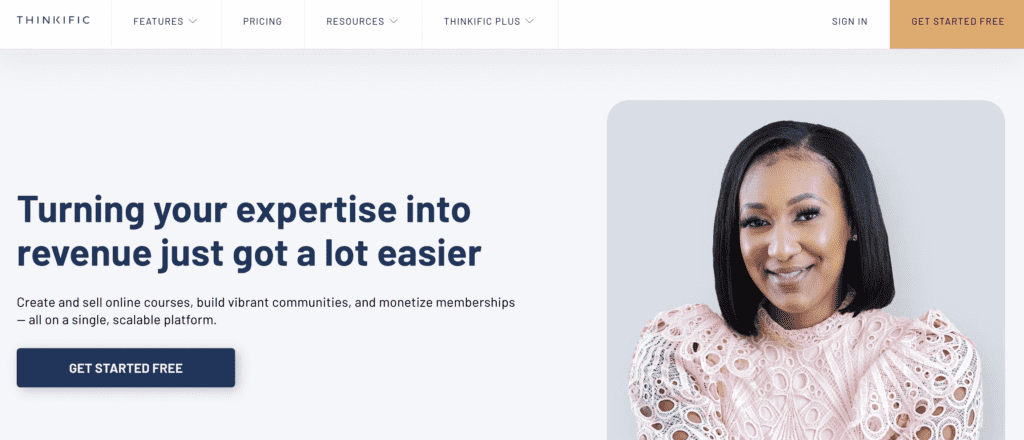
If you want to create and sell online courses, build vibrant communities, and monetize memberships, Thinkific is the platform for you. It is user-friendly and allows you to create a customized website with your branding. You can also integrate it with your existing website if you already have one.
How do I get paid on Thinkific?
Thinkific offers flexible payment options. You can choose to get paid via PayPal or Stripe. You can also set up automatic payments for your courses. Thinkific also allows you to set up payment plans for your courses, which can increase your revenue.
What Are the fees on Thinkific?
Thinkific offers a free plan, but it has limited features. If you want to access more features, you can upgrade to the Basic, Pro, or Premier plan. The Basic plan costs $49 per month, the Pro plan costs $99 per month, and the Premier plan costs $499 per month. Thinkific charges a transaction fee of 5% on the free plan and 0% on all paid plans. However, you will still have to pay transaction fees charged by your payment processor.
In conclusion, Thinkific is an excellent platform for creating and selling online courses. It offers flexible payment options and has different pricing plans to suit your needs. If you are looking for a platform to monetize your expertise, Thinkific is definitely worth considering.
Marketing Your Digital Products
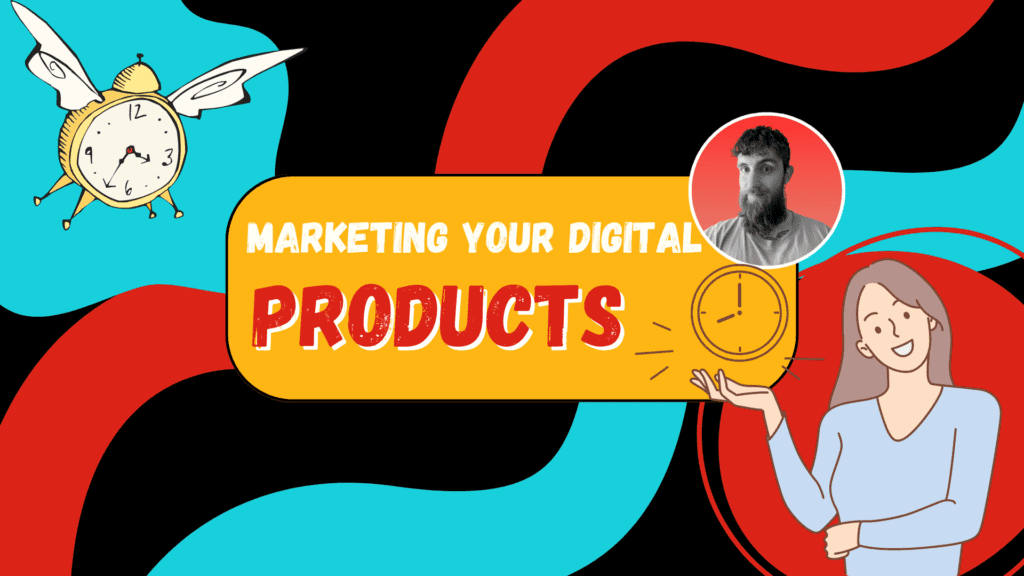
Once you have created and uploaded your digital products to one of the free platforms available, the next step is to market them effectively to reach your target audience. Here are some tips on how to promote your digital products for free:
Know Your Audience
Before you start marketing your digital products, it’s important to know who your target audience is. This will help you tailor your marketing efforts to reach the right people. Consider factors such as age, gender, interests, and location when defining your audience.
Use Social Media
Social media platforms like Instagram, Twitter, and Facebook are great places to promote to sell digital products for free. Create a business account and use relevant hashtags to reach a wider audience. Share high-quality images and videos of your products and engage with your followers to build a community.
Email Marketing
Email marketing is a great way to reach your audience directly. Create a mailing list and send regular newsletters to keep your subscribers informed about new products, promotions, and updates. Use a clear and concise subject line to grab their attention and make sure your emails are mobile-friendly.
Collaborate with Influencers
Collaborating with influencers can help you reach a wider audience and boost sales. Look for influencers in your niche and reach out to them with a proposal for a collaboration. Offer them a free product in exchange for a review or a shoutout on their social media channels.
Offer Discounts and Promotions
Everyone loves a good deal, so offering discounts and promotions can help you attract new customers and retain existing ones. Consider offering a discount code for first-time customers or running a limited-time promotion to create a sense of urgency.
By implementing these marketing strategies, you can effectively promote your digital products for free and reach your target audience. Keep in mind that building a successful online business takes time and effort, but with the right approach, you can achieve your goals.
Conclusion
In conclusion, selling digital products has never been easier, thanks to the availability of various free platforms. With these platforms, you can create an online store or sell your products on social media without worrying about setting up a website or dealing with payment processing.
When choosing a platform to sell digital products for free, consider factors such as ease of use, payment options, and customer support. Some of the best platforms to sell digital products for free include Payhip, Gumroad, and Payhip. These platforms offer a user-focused approach to building the platform, making it easy to sell and promote your ebooks, courses, design assets, and more.
If you are a beginner looking to sell downloads, Payhip is the best platform for you. It provides simple and extremely easy solutions to sell digital products on your website. In addition to the eCommerce platform, it offers smart and agile tools to enhance sales and promote products via social media.
On the other hand, if you are an artist, writer, musician, or other creative, Gumroad is the platform for you. It is dedicated to selling digital products and offers great features for creatives who want to sell ebooks, music, software, or other digital products.
In summary, with the above free platforms, you can start your digital product business without breaking the bank. Choose the best platform that suits your needs and start selling your digital products today.

The Ultimate Guide to Digital Products: Everything You Need to Know
Ok now you know the top 8 platforms to sell digital products, I think it's time to go deeper into the digital product business with this ultimate guide.
Frequently Asked Questions
There are several free platforms available that allow you to sell digital products without any upfront costs. Some popular options include Payhip, Gumroad, Selz, Sellfy, and AnyShop. These platforms offer a range of features such as customizable storefronts, payment processing, and marketing tools to help you reach a wider audience.
Etsy charges a listing fee of $0.20 per item, and a transaction fee of 5% on each sale. While this may not seem like a lot, it can quickly add up if you have a large inventory of digital products. However, Etsy does offer a range of tools and features to help you showcase your products and reach a wider audience, which can be beneficial for your business.
If you’re looking for alternative platforms to sell your digital products, there are several options available. Some popular choices include Creative Market, Envato Market, and WooCommerce. These platforms offer a range of features such as customizable storefronts, payment processing, and marketing tools to help you reach a wider audience.
Creating a website to sell digital products can be a great way to establish a strong online presence and reach a wider audience. There are several website builders available that make it easy to set up a professional-looking online store, even if you have no coding or design experience. Some popular options include Wix, Shopify, and Squarespace.
There are several types of digital products that are in high demand, including ebooks, online courses, music, design assets, and website templates. These products can be created once and sold multiple times, making them a great source of passive income. It’s important to research your target audience and identify their needs and interests to create digital products that are in demand.
Facebook Marketplace is a free platform that allows you to sell a wide range of products, including digital products. To sell digital products on Facebook Marketplace, you can create a post with a detailed description of your product and include a link to your online store or download page. It’s important to follow Facebook’s guidelines and policies to avoid any issues with your account.
Please note: Some of the links in my posts are affiliate links. I get commissions for purchases made through those links. As an Amazon Associate I earn from qualifying purchases when you buy something from those links.

